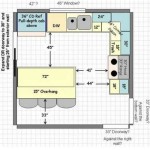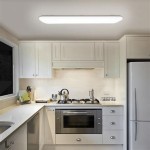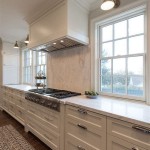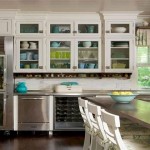Vinyl Plank Flooring in the Kitchen
Vinyl plank flooring has become a popular choice for kitchens due to its durability, water resistance, and affordability. It offers a compelling combination of practicality and aesthetics, mimicking the look of hardwood or tile at a fraction of the cost. Understanding the benefits and drawbacks of vinyl plank flooring can help homeowners make informed decisions about their kitchen renovation projects.
Durability and Water Resistance
Kitchen floors are subjected to heavy foot traffic, spills, and temperature fluctuations. Vinyl plank flooring is engineered to withstand these challenges. Its multi-layer construction typically includes a wear layer, a printed design layer, a core layer, and a backing layer. The wear layer protects against scratches, scuffs, and stains, while the core layer provides stability and cushioning. Many vinyl plank options also feature a waterproof core, making them highly resistant to water damage, a crucial factor in kitchens prone to spills and moisture.
Aesthetic Versatility
Vinyl plank flooring offers an extensive range of design options, allowing homeowners to achieve various aesthetic styles. Manufacturers utilize advanced printing technologies to replicate the natural look of hardwood, tile, and stone. From the rustic charm of oak planks to the sleek elegance of marble tiles, vinyl plank flooring can mimic the appearance of these materials with remarkable accuracy. This versatility makes it suitable for a wide array of kitchen designs, from traditional to contemporary.
Installation and Maintenance
Vinyl plank flooring is known for its relatively easy installation process. Many products utilize a click-lock system, allowing planks to be connected without the need for glue or nails. This simplifies the installation process, making it a viable option for DIY enthusiasts. Furthermore, vinyl plank flooring is easy to maintain. Regular sweeping and occasional mopping are typically sufficient to keep the floor clean. The waterproof nature of many vinyl plank options also makes cleaning up spills a hassle-free task.
Beyond the core advantages, there are several other important factors to consider when choosing vinyl plank flooring for a kitchen.
Subfloor Preparation
While vinyl plank flooring is generally easy to install, proper subfloor preparation is crucial for optimal performance and longevity. The subfloor should be clean, level, and free of any imperfections. Uneven subfloors can cause the planks to flex and potentially crack over time. Addressing any underlying issues with the subfloor before installation will ensure a smooth and stable finished product.
Thickness and Wear Layer
The thickness and wear layer of vinyl plank flooring contribute to its durability and comfort. Thicker planks generally offer better stability and sound absorption, while a thicker wear layer provides enhanced protection against scratches and wear. Consider the level of foot traffic and anticipated wear and tear in the kitchen when selecting the appropriate thickness and wear layer for your needs.
Quality and Cost
Vinyl plank flooring is available at a wide range of price points, reflecting variations in quality and features. While budget-friendly options can be appealing, investing in higher-quality vinyl plank flooring often translates to better durability, water resistance, and aesthetics. Consider the long-term value and expected lifespan of the flooring when evaluating different price points.
The variety of styles available further enhances the appeal of vinyl plank flooring for kitchens. Textured surfaces can add depth and realism, mimicking the grain of wood or the texture of stone. Embossed or beveled edges can further enhance the visual appeal and create a more authentic look.
Underlayment Options
Underlayment plays a significant role in the performance and comfort of vinyl plank flooring. It provides cushioning, sound insulation, and moisture protection. Different underlayment options are available, each with its own set of benefits. Some underlayments are designed specifically for moisture-prone areas, while others prioritize sound reduction. Choosing the appropriate underlayment can enhance the overall comfort and functionality of the flooring.
Finally, it is important to consider the environmental impact of flooring choices. Look for vinyl plank flooring options that are manufactured with recycled content or are low in volatile organic compounds (VOCs). These considerations can contribute to a healthier indoor environment and a more sustainable approach to home renovation.

8 Reasons You Should Consider Luxury Vinyl Plank Flooring

Updating A Kitchen With Vinyl Engineered Plank Flooring Cutertudor

Hardwood Vs Luxury Vinyl Plank Flooring The Creative Kitchen Co

Vinyl Flooring In The Kitchen Hgtv

Coreluxe 5mm W Pad Daydream Meadow Oak Waterproof Rigid Vinyl Plank Flooring 6 In Wide X 48 Long Ll

Hardwood Vs Luxury Vinyl Plank Flooring The Creative Kitchen Co

Lvt Vs Lvp Flooring What S The Difference America

75 Vinyl Floor Kitchen Ideas You Ll Love January 2024 Houzz

Coreluxe Ultra 7mm W Pad Rattan Maple Waterproof Rigid Vinyl Plank Flooring 8 9 In Wide X 60 Long Ll

Lifeproof Luxury Vinyl Plank Flooring The Home








